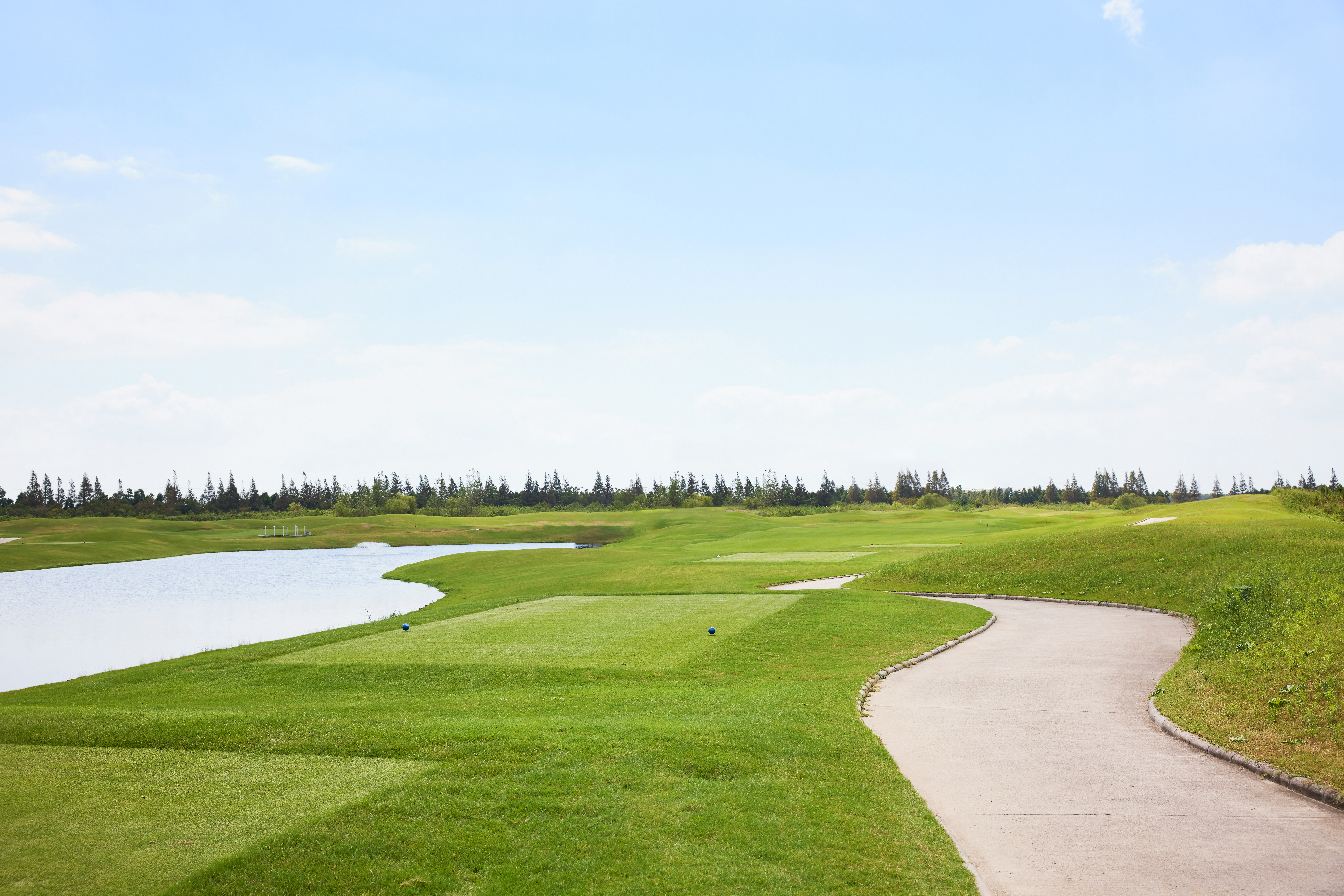The adaptability of turfgrass to the natural environment: such as light, temperature, soil, etc.
1. Lighting
Insufficient light will affect the growth rate of turf grass, the number of tillers, root volume, leaf color, etc. When there is severe lack of light, the stems and leaves of turfgrass will turn yellow or even die due to malnutrition.
The order of shade tolerance of warm-season turfgrass is: obtuse grass, fine-leaf zoysia grass, zoysia grass, thrift grass, carpet grass, spotted paspalum, buffalo grass, bermudagrass, etc.
The order of shade tolerance of cool-season turfgrass is: purple wooly fescue, creeping bentgrass, reedy fescue, small chaff grass, perennial ryegrass, bluegrass, etc.
2. Temperature
Temperature is one of the main factors that limits the distribution and cultivation area of turfgrass species. Whether it is cold-season turfgrass or warm-season turfgrass, there is a big difference in the adaptability to temperature changes.
The order of heat resistance of warm-season turfgrass is: zoysia grass, bermudagrass, buffalo grass, carpet grass, thrift grass, blunt grass, spotted paspalum, etc. Cool-season turfgrasses, in order of heat tolerance, are: reedy fescue, oxtail grass, paspalum, bentgrass, bluegrass, bluegrass, fine-leaved fescue, small brangrass, and perennial ryegrass. wait.
The order of cold resistance of warm-season turfgrass is: zoysia, bermudagrass, spotted paspalum, thriftgrass, carpet grass, and blunt-leaf grass.
The order of cold-tolerance of cool-season turfgrass is: bluegrass, creeping bentgrass, timothy, perennial ryegrass, bluegrass, bluegrass, purple fescue, reedy fescue, etc.
Within a certain range, as moisture increases, turf grass grows better. However, both too much and too little water are not conducive to the growth and development of lawn grass.
The order of drought tolerance of warm-season grass species is: buffalo grass, bermudagrass, zoysia grass, paspalum, blunt-leaf grass, thrift grass, carpet grass, etc.
The order of drought tolerance of cool-season grass species is: heterostachys, fescue, reed fescue, wheatgrass, grassland grass, creeping bentgrass, perennial ryegrass, etc.
The order of strength of warm-season grass species in terms of waterlogging tolerance is: bermudagrass, spotted paspalum, blunt-leaf grass, carpet grass, zoysia grass, thrift grass, etc.
The order of strength of cool-season grass species in terms of waterlogging tolerance is: creeping bentgrass, reedy fescue, thin bentgrass, June grass, perennial ryegrass, fine-leaved fescue, etc.
3. Soil acidity and alkalinity
Lawn grass grows well in slightly acidic soil with a pH value of 5.0-6.5. However, different turfgrass species have different tolerances for soil pH.
Warm-season turf grasses, in order of their ability to tolerate soil acidity, are: carpet grass, thrift grass, bermudagrass, zoysia grass, blunt-leaf grass, spotted paspalum, etc.
The order of cool-season turfgrass tolerance to soil acidity is: reedy fescue, fine-leaved fescue, thin bentgrass, creeping bentgrass, perennial ryegrass, June grass, etc.
Warm-season turf grasses, in order of their ability to tolerate soil alkalinity, are: buffalo grass, bermudagrass, zoysia grass, blunt-leaf grass, spotted paspalum, carpet grass, thrift grass, etc.
The order of cool-season turfgrass tolerance to soil alkalinity is: creeping bentgrass, reedy fescue, perennial ryegrass, fine-leaved fescue, thin bentgrass, etc.
4. Soil hardness
Appropriate soil hardness can help improve the trampling resistance of lawns, but when its hardness exceeds a certain limit, it will affect the growth and development of turfgrass, causing root necrosis and causing the death of turfgrass. According to surveys, the soil hardness of general parks and sports grounds is 5.5-6.2 kg/cm2, and the hardness of bare soil is 10.3-22.2 kg/cm2. Zoysia grass can grow well when the soil hardness is 2 kg/cm2. When the soil hardness is higher than 2-10 kg/cm2, although its seeds germinate, the roots cannot grow. Therefore, preventing soil compaction is very important in lawn establishment and lawn management.
Post time: Jul-02-2024

